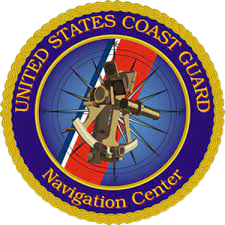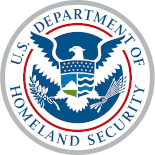- What can LRIT information be used for?
- What vessels are required to participate in LRIT?
- When will US ships be required to be LRIT compliant? (as per the U.S. rule)
- What do US flag ships need to do to be LRIT compliant?
- What will happen when ships try to call on US ports that are not LRIT compliant before the Radio Certificate for the vessel expires?
- Where during its international voyage musts a ship transmit position reports?
- How must a ship transmit position reports?
- How often must a ship transmit position reports?
- Which Application Service Providers may a ship use?
- Who pays for LRIT information (vessel position data)?
- How many US flag vessels does the United States anticipate will fall under the LRIT rule?
- When can an LRIT ship turn off its LRIT equipment?
- What will ships flying a flag of a country that does not have a National Data Center do?
- Why are we doing LRIT when we have AIS?
- Who pays for LRIT on my ship?
- What exemptions are there from reporting?
- How do I initiate LRIT Conformance Testing?
- How often must a vessel perform a LRIT Conformance Test?
1. What can LRIT information be used for? LRIT information can only be used for Security, Safety and Environmental protection. The US does recognize the commercial confidentiality and sensitivity of LRIT information and will not be sharing this in any way with commercial entities.
2. What vessels are required to participate in LRIT?
a. Is it a cargo vessel, to include high speed craft, over 300 gross tons and greater as defined by SOLAS?
Is it a passenger vessel that carries more than 12 passengers, to include high speed craft?
Or
b. Does the vessel engage in international voyages or have a Certificate of Inspection (COI) for international voyages?
NOTE: SOLAS defines an International Voyage as a voyage from a country to which the present Convention applies to a port outside such country, or conversely.
If the answer to either (a) and (b) is NO, then the vessel is NOT subject to the regulation.
NOTE: Certain government/public vessels are subject to the LRIT regulations based on the vessels required certification.
3. When were US ships required to be LRIT compliant (as per the U.S. rule)? If a US flag ship’s Radio Safety Certificate expired after 31 December 2008, the vessel must be LRIT compliant before the expiration of the Radio Safety Certificate. There are a few exemptions to this...including SOLAS vessels operating within VHF-FM range (AIS range).
4. What do US flag ships need to do to be LRIT compliant? A US flag ship must under go and pass an LRIT equipment compliance test. In order to schedule a vessel equipment compliance test, please visit the Navigation Center LRIT conformance test scheduling page. USCG.Ship owners should contact the manufacturer of their currently installed Inmarsat C equipment to see if any software upgrades will be required to perform properly as an LRIT terminal, or purchase a new LRIT capable terminal.
5. What will happen when ships try to call on US ports that are not LRIT compliant before the Radio Certificate for the vessel expires? The rule is issued under the authority of 46 USC 70115 and 33 USC 1231; these statutes provide for full civil and criminal penalties under them with various fines associated. To ensure effective compliance, the CG has implemented a compliance strategy that includes enforcement in appropriate cases. In the event of willful violation, the US will consider referring the matter to the Dept of Justice for criminal prosecution.
Example: If a ship arriving at a US port has submitted an advanced notice of arrival but its LRIT information has not been received, the COTP may exercise various enforcement options, including, when and if necessary, holding the ship offshore in US territorial seas until it can be boarded and checked for security concerns.
6. Where during its international voyage musts a ship transmit position reports? The requirements for the transmission of position reports, imposed by the United States, vary depending on the relationship of the United States to a ship identified in CFR Sec. 169.205:
- Flag State relationship. A U.S. flag ship engaged on an international voyage must transmit position reports wherever they are located;
- Port State relationship. A foreign flag ship engaged on an international voyage must transmit position reports after the ship has announced its intention to enter a U.S. port or place under requirements in 33 CFR part 160, subpart C.
- Coastal State relationship. A foreign flag ship engaged on an international voyage must transmit position reports when the ship is within 1,000 nautical miles of the baseline of the United States, unless their Flag Administration, under authority of SOLAS V/19-1.9.1, has directed them not to do so.
7. How must a ship transmit position reports? A ship must transmit position reports using Long Range Identification and Tracking (LRIT) equipment that has been type-approved by their Administration. To be type-approved by the Coast Guard, LRIT equipment must meet the requirements of IMO Resolutions A.694 (17), MSC.263 (84), and IEC standard IEC 60945 (Incorporated by reference, see Sec. 169.15).
8. How often must a ship transmit position reports? A ship's LRIT equipment must transmit position reports at 6-hour intervals unless a more frequent interval is requested remotely by an LRIT Data Center.
9. Which Application Service Providers may a ship use? The Application Service Provider (ASP) recognized by the USCG is Pole Star.
10. Who pays for LRIT information (vessel position data)? Contracting Governments that are entitled to request and receive LRIT information will be required to pay for this service. The United States as a contracting government will incur the cost for vessels that transit within 1000 nm of the US coastline.
11. How many US flag vessels does the United States anticipate will fall under the LRIT rule? More than 800 vessels are subject to the LRIT regulations.
12. When can an LRIT ship turn off its LRIT equipment? A ship engaged on an international voyage may switch off its LRIT equipment only when it is permitted by its Flag Administration, in circumstances detailed in SOLAS V/19:
- Where international agreements, rules or standards provide for the protection of navigational information (WARSHIPS for example)
- In exceptional circumstances and for the shortest duration possible where the operation is considered by the master to compromise the safety or security of the ship.
- When a ship is undergoing repairs in dry-dock or in port or is laid up for a long period, the master may temporarily stop the transmission.
13. What will ships flying a flag of a country that does not have a National Data Center do? By regulation the government should send their ships to another Data Center, if they in fact cannot provide a data center. This is not the fault of the ship, but rather the contracting government.
14. Why are we doing LRIT when we have AIS? LRIT provides global tracking of US flag vessels and also long range tracking of all vessels within 1000nm of the United States. AIS satellite technologies improves US tracking capabilities and LRIT will continue to provide an additional tracking source of information.
15. Who pays for LRIT on my ship? The equipment necessary to transmit LRIT data is not a new carriage requirement. With few exceptions, ships required to transmit LRIT information will not need to purchase new equipment. The affected US vessel population is already required to carry the requisite GMDSS equipment on board (INMARSAT-C). This equipment should be operable and capable of meeting LRIT requirements. The cost for newer equipment is incurred by the vessel.
16. What exemptions are there from reporting? A ship is exempt from this subpart if it is-
- Fitted with an operating automatic identification system (AIS), under 33 CFR 164.46, and operates only within 20 nautical miles of the United States baseline;
- A warship, naval auxiliaries or other ship owned or operated by a SOLAS Contracting Government and used only on Government non-commercial service, or
- A ship solely navigating the Great Lakes of North America and their connecting and tributary waters as far east as the lower exit of the St. Lambert Lock at Montreal in the Province of Quebec, Canada.
17. How do I initiate LRIT Conformance Testing? Operators of U.S. flagged vessels subject to the LRIT Regulation are encouraged to contact the U.S. Coast Guard to discuss LRIT implementation and conformance testing. Operators may request conformance testing by visiting our LRIT Conformance Test Scheduling page.
Operators of vessels whose most recent annual radio survey was completed between January and March 2008 will have conformance test scheduling priority.
18. How often must a vessel perform a LRIT Conformance Test? The LRIT conformance test certificate has no expiration date as long as the equipment remains the same. However if the status is changed a retest may be required due to the following reasons:
- A vessel changes or upgrades the LRIT equipment (Antenna, Motherboard, etc.)
- A vessel flags in to the United States of America.
Operators of U.S. flagged vessels need to complete an LRIT Change Letter if any other information changes. Examples are:
- Vessel Name
- Call Sign
- MMSI
- Registry Port
- New Ownership
Operators may request conformance testing by visiting our LRIT Conformance Test Scheduling page.
Please contact us if you have any questions (be sure to select "LRIT" from the pull-down menu).
LRIT Reference Documents >>

